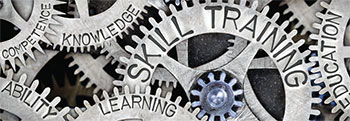By Bonnie Clipper, DNP, RN, MA, MBA, CENP, FACHE, and Jaime Murphy Dawson, MPH
Building a culture of innovation
To innovate is to put new ideas into practice or existing ideas into practice in new ways. Innovation isn’t new, but its prominence and need in health care continues to increase. Addressing the complexities of healthcare delivery requires creative solutions and approaches that challenge the status quo. Building a culture of innovation necessitates developing skills that allow for ongoing innovation. For this reason, the American Nurses Association (ANA) is focused on nurse-led innovation for healthcare improvement as a part of its strategic goals.
Key competencies have been identified before, but nursing hasn’t adopted them as applicable to the innovation movement. The five competencies that all nurses should be proficient in include:
- Creativity: Innovative solutions are the product of divergent thinking and creative problem solving. Nurses can demonstrate divergent thinking by identifying problems and developing a broad set of solutions. This is similar to brainstorming, and it’s a catalyst for creative ideas.
- Spanning boundaries: Innovation happens when silos are broken down. Teams, departments, or organizations find creative solutions when they look outside of their own walls and across a broad scope of stakeholders. Cross-functional, interprofessional teams attain a better-balanced outcome that represents a variety of areas, making solutions more likely to “stick.” And inspiration may come from fields entirely outside of health care.
- Change management: Nurses should be able to support and guide change within their organizations. The ability to embrace what’s new and different and help it develop “roots” is an important role for nurses, especially in such a dynamic environment. At the same time, organizations need to be agile and flexible to successfully adapt and even thrive when the unexpected happens. This is more likely to occur in a culture where creativity is recognized and rewarded.
- Considered risk-taking: Creative problem-solving results in bold, often risky ideas. Yet risk-taking is often looked upon negatively in health care, and focus is placed on minimizing risks to prevent errors and reduce harm. Considered risk-taking is an intentional and thoughtful process where both benefits and potential problems are taken into account before an action is pursued.
- Failure tolerance: Taking calculated risks means accepting that failure is a possibility and proceeding anyway. Innovative organizations embrace frequent failure as a learning opportunity. Leaders who role model failure as an opportunity for growth, build trust. The work of innovation continues, and success becomes more likely.


Throughout 2018, we will present a series of articles on innovation. Future articles will tell the stories of nurse innovators and explore how their work is shaping the future of health care. We’ll also outline ANA’s new innovation framework and provide an update on work in this area.
Bonnie Clipper is vice president of Nursing Practice and Innovation at ANA. Jaime Murphy Dawson is director of program operations in Nursing Practice and Innovation at ANA.
Selected references
Aungst H, Ruhe M, Stange, KC, et al. Boundary spanning and health: Invitation to a learning community. London J Prim Care. 2012;4(2):109-15.
Cianelli R, Clipper B, Freeman R, Goldstein J, Wyatt TH. The Innovation Road Map: A Guide for Nurse Leaders. Greensboro, NC: Innovation Works; 2016.
Crenshaw, JT, Yoder-Wise, PS. Creating an environment for innovation: The risk-taking leadership competency. Nurse Leader. 2013;11(1):24-7.
Innovation competency model. April 11, 2011.
Luzinski C. Identifying leadership competencies of the future: Introducing
the use of strategic foresight. Nurse Leader. 2014;12(4):37-39,47.
Marchal JM. Developing Innovation Competencies for Organizations.
ant2-ANA NPWE-118


















